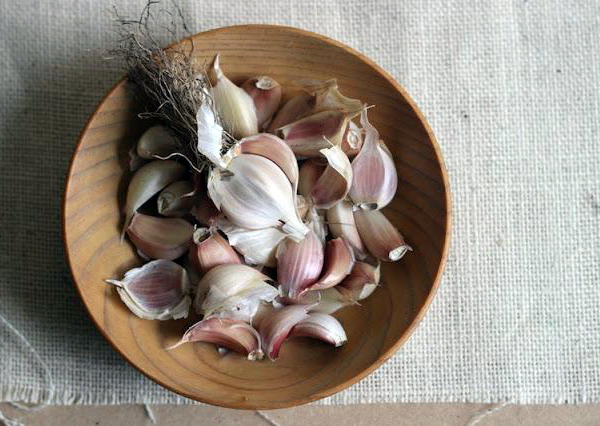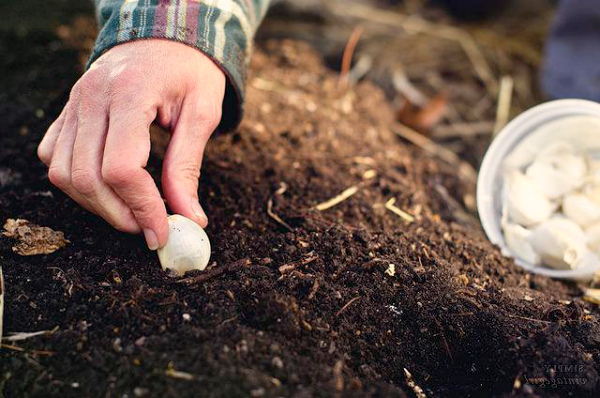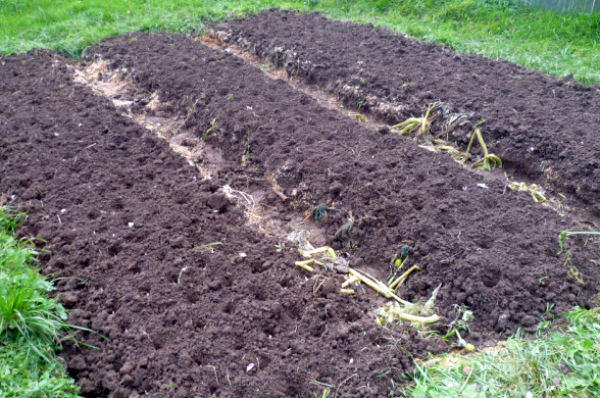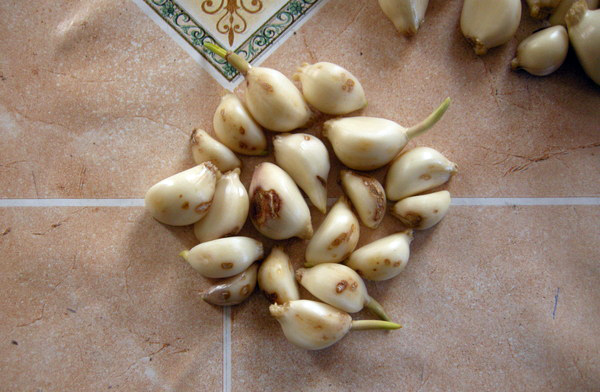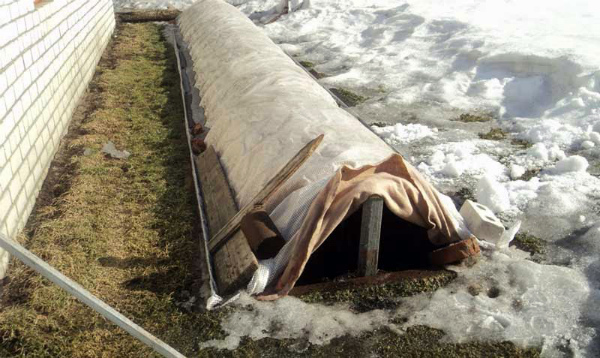When to plant garlic for the winter in the Urals
Content
Which garlic to choose - spring or winter?
For the successful cultivation of garlic in the Urals, it is necessary to choose exclusively adapted varieties. Until recently, there were no spring varieties of garlic intended for this area at all, so only winter varieties were planted. All vegetable growers know that among winter crops there are varieties that form arrows (arrows), and there are those that do not form arrows. Garlic forming arrows is considered to be more hardy and frost-resistant. This fact should be taken into account when choosing a variety for a certain region of the Urals.
Most of the region has a sharply continental climate, with severe winters followed by short but hot summers. In such conditions, it is important to choose the right time for planting a crop. For example, for the Middle Urals, it is necessary to choose only varieties specially zoned for this region. These include: "Azure", "Vyatsky", "Amethyst", "Nazus". In the southern part of the region, where the climate is more stable, you can plant any varieties suitable for growing in central Russia, including spring varieties.
Landing dates
The timing of sowing garlic before winter may vary depending on the climatic conditions of the area. So, for the Middle Urals, the period from the last week of September to the end of the first week of October is considered optimal. For the Northern Urals, sowing time begins in mid-September, and if the weather is not warm, then even earlier. In the southern regions, it is recommended to plant garlic in the first decade of October.
To a large extent, the weather conditions also affect the landing time. In ancient times, gardeners in the Urals were guided by folk signs. So it was customary to plant garlic:
- when the birds began to fly south;
- when it felt chilly on the street;
- when it was no longer possible to stand on the damp ground with bare feet.
Now few people use these signs, and the main condition for the successful cultivation of garlic is the correct calculation of the time before the onset of constant cold weather.
You need to plant garlic for the winter 30-40 days before the ground becomes frozen. This time is enough for the teeth to take root, but do not have time to sprout.
Lunar dates
As for the timing of planting according to the lunar calendar, many favorable days for sowing cloves are determined in August, but this month it is too early to plant a crop, even in the Urals. In September, it can be planted at the beginning of the month, which is also very early. But the ideal days, according to the lunar calendar, are the days of September 19–20. This period is suitable for the middle Urals, while in its southern part it is better to plant the prongs in October. The lunar calendar for October allocates the second half of the month for planting work, and October 17 is considered the ideal day.
Landing technology
The agrotechnology of growing garlic has many features, including:
- correct fit;
- further care;
- soil and seed preparation;
- choosing a place for landing.
Some vegetable growers strictly adhere to the first three points, but do not pay much attention to where the bed for garlic is laid out, and after what plants it is planted. Meanwhile, the yield of the crop directly depends on this.
It is very important for garlic to follow the principles of crop rotation - it is not recommended to plant the teeth for two years in a row on the same bed, and you can return the plants to their previous place only after 3-4 years have passed.
It also matters who was the predecessor in the garden. The culture grows best of all after cucumbers, eggplants, peppers, all pumpkin seeds. It should not be planted in soil depleted by root crops, as well as after onions.
Seed and soil preparation
It is known that, unlike spring garlic, which is sown only with prongs, winter garlic can be grown both from a prong and from a seed bulb. In the latter case, it will take two years to get a full-weight head, and you can get a head from the tooth for the next year. Whichever option you choose, the seed must be properly prepared before planting.
The preparation of winter varieties consists in disinfecting the teeth in order to kill pathogenic bacteria in them and prevent plant diseases in the future.
To begin with, the teeth must be sorted out, the damaged, dried, rotten and the smallest ones must be rejected. After that, the material is placed in turn in the following solutions:
- saline (3 tablespoons / 5 l of water) - for 2 minutes;
- copper sulfate (1 spoon / 10 l of water) - stand for 1 minute.
If there is furnace ash, then the two previous procedures can be replaced with a solution from it. To prepare the solution, you need to pour 400 g of ash into 2 liters of water, boil the mixture for half an hour, then cool. In a cold solution, the teeth are kept for 2 hours. After these procedures, the material can be considered ready for planting.
The main condition for a high yield of garlic is a fertile, preferably sandy loam, well-drained soil. Also, plants do not tolerate acidic soil.If the soil in your area is acidic and heavy, you need to add 1 cup / 1 m² of lime.To increase the drainage properties, you can add a little river sand.
2-3 weeks before planting, the garden bed must be dug to a depth of 20-25 cm. During the digging, fertilizers should be applied to the soil: humus 5-6 kg / 1 m², superphosphate 30 g / 1 m², potassium salt 20 g / 1 m². You cannot fertilize the soil with fresh manure - it makes the garlic sick and may even die. After digging, the earth is watered with a solution of salt (1 glass / 1 bucket) or copper sulfate (1 spoon / 10 l of water) and covered with a film before planting.
Disembarkation rules
Planting teeth for the winter is carried out within strictly defined terms. On the prepared bed, make longitudinal furrows 10-15 cm deep. The distance between the rows should be at least 15 cm. To protect the teeth from premature decay, a layer of sand (2-3 cm) is poured on the bottom of the furrow, after which at a distance of 8-10 cm each teeth or bulbs are planted from a friend. Next, the sowing is covered with soil, slightly compacted.
It makes sense to water the garden bed only when the soil is completely dry. In other cases, the bed is covered with mulch (humus, peat, sawdust).
For some areas of the Urals, where winters are very harsh, mulch alone will not be enough. Vegetable growers in these regions recommend covering the bed with a film, roofing felt or other insulation.
Care
Garlic is undemanding to care for. If it is covered for the winter, then all caring activities begin only in spring. When the snow finally melts, the bed must be loosened to provide oxygen to the roots. It is necessary to loosen carefully and shallowly, since the roots of the plants are located close to the surface.
Watering the beds is carried out as needed. In the stage of their active growth, the bulbs need regular soil moisture.In extreme heat, plants are watered once every 2-3 days, on cloudy days - once every 7-10 days, and when it rains, there is no need to water. Closer to harvest, in 2-4 weeks, watering should be stopped and the heads should be allowed to ripen.
Periodically, you need to remove weeds from the garden. When the plants are mulched, there is no need for weeding, as well as frequent watering, since mulch protects the soil not only from weeds, but also from drying out.
Video "Ural Winter Garlic"
In the Urals, you can grow very large (up to 150 grams) garlic. How to get the seeds of such garlic and how to grow it is discussed in this video.
Fertilizer
If the soil for the winter was filled correctly, then in the fall, garlic does not need fertilizers. But starting in spring, the plants will need to be fed at least three times:
- first, as soon as the snow melts, the soil is watered with a solution of urea (1 spoon / 1 bucket of water), the consumption of the product is 2 l / 1 m²;
- the second time, after 2 weeks from the previous feeding, nitrophoska is used (2 spoons / 1 bucket of water), the consumption is the same;
- last time, a month before harvest (mid-June) - superphosphate (2 spoons / 1 bucket of water), consumption 4 l / 1 m².
Supporters of everything natural can use compost, humus, ash. As a top dressing, you can use a liquid mullein in a ratio of 1: 7 or a litter of 1:15. You need to water the garden from a watering can so that the solution does not get on the leaves, as it can burn them. In cold weather, foliar dressing can be carried out with an ash solution, or simply sprinkled with a dry product on the plants - this will increase their resistance to diseases and pests.
Video "Growing garlic in the Southern Urals"
What is the technology of growing noble garlic without loss, you will learn from this video.

